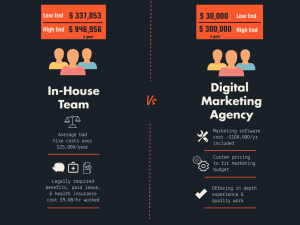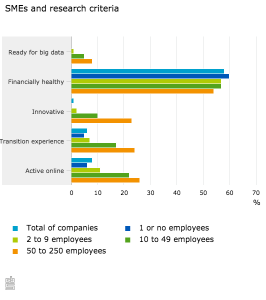— December 21, 2017

Every day, leaders at all levels within an organization have to influence others to carry out requests, implement decisions, meet organizational goals, and more. However, many leaders fail to use influencing tactics effectively. Rather than getting people to commit to a course of action, they sometimes create resistance or even resentment.
Are leaders in your organization influencing others effectively? And, how can they improve their influencing strategies?
Knowing the Types of Influencing Tactics and Their Uses
Part of influencing others effectively is knowing how to adapt to the situational context—knowing which kind of tactics to use and when. There are 11 distinct influencing tactics that most people use (whether they recognize it or not). For this article, we’ve sorted the 11 influencing tactics into three categories based on how effective they are for gaining someone’s commitment to a course of action.
Knowing when to use a given tactic is crucial for getting the best results. Even the “least effective” influencing tactics can be appropriate in specific situations.
Most Effective Influencing Tactics
The following tactics are often successful for gaining a person’s commitment to a request or proposal:
Reasoning:
This is applying logic-based arguments and factual evidence to demonstrate the feasibility, relevance, and necessity of specific tasks or objectives.
Reasoning can be an effective tactic when both people share task objectives. Also, leaders who are known experts with track records of success can use reasoning effectively with their bosses, peers, and direct reports.
However, reasoning is less effective when the influencer is not seen as an expert, has a poor track record, or is attempting to use reasoning on someone with more expertise on the subject.
For example, let’s say that Will is an engineer with a proven track record of improving process efficiency. He spots an error in a product design that increases costs by 10%. If he points this out to his boss and shows how changing this flaw can save money, he will have provided a solid, fact-based argument for making that change that is likely to be given serious consideration given his expertise and experience.
Inspiring:
This is an appeal to a person’s values, ideals, or emotions to gain commitment to a proposal.
Inspiring is highly effective with direct reports and peers when the objective is to gain commitment for a new project or change initiative. This form of influencing helps to build excitement and enthusiasm among this group.
However, inspiring is less effective when used on a boss or someone with whom the influencer has a poor personal relationship. Additionally, to inspire effectively, the influencer needs to know the values and beliefs of their audience.
For example, say that Bill is passionate about growing the company’s product line. Knowing this, Sam can point out to Bill how complying with his request would make it easier for the company to launch a new product. This makes Bill more excited to complete the task, increasing his engagement and dedication to it.
Consulting:
This involves asking the person to provide their input for making improvements or helping plan a proposed change or activity to make them more invested in it.
Consulting generally works well with peers and direct reports when the influencer has the authority to assign work and make changes. Also, consulting is useful when the person being influenced has specific information/skills/knowledge that the influencer does not. When the person being influenced is needed for effective implementation, consulting becomes practically necessary.
This influencing method is less effective when:
- The other person is not open to providing suggestions/concerns;
- The other person lacks the needed expertise to make meaningful contributions; and
- The consulted person is not really necessary for a successful implementation.
The following situation is an example of the use of consulting: You need to launch a new training program, but you need to make sure that the training is something everyone can benefit from. So, you send out an open letter to the managers in your organization, asking what skills and knowledge they most need their teams to have based on their individual job roles. The input they give can help you to make sure the training program offers relevant and necessary skills while getting team leaders/managers more invested in the program.
Collaborating:
Collaborating is offering to provide resources and other assistance to make it easier for the person to carry out the request.
Collaborating works extremely well with peers when the influencer has resources available to help reduce the cost or difficulty of complying with a specific request. However, collaborating is less effective with an influencer’s boss—they already have access to the same resources.
For example, say Mark wants to have Phil complete a report in time for a presentation with the boss. Because it’s short notice, Phil already has a full schedule of work and cannot spare the time. So, Mark offers to have someone else on the team take a few tasks off of Phil’s plate so he can focus on the report.
Moderately Effective Influencing Tactics
These tactics can be effective for gaining compliance or when used as “partners” to enhance the impact of the most effective influence behaviors. They include:
Apprising:
Letting the person know how they will benefit from complying with the request—a.k.a. “what’s in it for me?”
Apprising can be an effective tactic to use with direct reports and peers when the influencer knows both how the person they’re influencing would benefit from complying with a request and what that person values.
For example, if an employee is the type of person who is more concerned with helping others than making money, pointing out that meeting or beating a sales goal will result in a bonus for them may not get them to commit to meeting that goal. Instead, focusing on how hitting the sales target will help ensure their co-workers are eligible to attend the three-day “top performers” sales meeting held in Miami, FL may be more effective.
Recognizing:
This involves using praise and positive comments before or during the attempt to influence someone to carry out requests or provide support.
This can be an effective tactic for influencing direct reports and peers when there is a positive relationship between them and the influencer. Recognizing is most effective when praise is delivered regularly and not just when a request is being made.
However, this tactic does not work well with the influencer’s boss or when the person being influenced doesn’t hold the influencer in high regard. It also is ineffective when someone may already resist a plan.
An effective example of recognizing might be to tell someone, like a project manager, that: “The last time you were my project manager everyone understood their roles, the work was well coordinated across departments and we came in on time and on budget. I know you’re busy but I’d like you to to be the project manager on this new initiative.”
Personal Appeals:
Personal appeals involve asking the person to fulfill a request based on friendship or as a personal favor.
This tactic can be effective when influencing peers the influencer knows well, has a loyal, amicable relationship with, and when the request is not seen as too difficult or costly.
Personal appeals can be less effective—or even counterproductive—when used on bosses or direct reports. Additionally, if the influencer doesn’t know the person very well or has a history of not reciprocating, this tactic may not work.
For example, Bill and Mark have worked effectively together in the past and have a good work relationship. Bill is having difficulty with a client issue because it’s outside of his area of expertise. Bill asks Mark for help because they have a positive work history and get along well. Because Mark perceives the request to be straightforward and believes it would not take a lot of time, he agrees to help his colleague.
Exchanging:
Exchanging is increasing the benefit on complying with a request by offering to give the person something they want in exchange.
Negotiating an exchange with direct reports and peers can be an effective influencing tactic when the influencer knows what the other person values—and has control over the incentives they desire. It also is important for the influencer to have a good reputation for delivering on promises.
However, exchanging may not work well with the influencer’s boss and when the influencer doesn’t know what the person wants.
This tactic is best used to build a cooperative relationship that allows for other influencing strategies to work.
For example, Mark and Will are managers on two different teams. Since their teams have different specializations, they often need help from someone on the other team to complete specific tasks. So, the two managers agree to set some time aside for their teams each week to help the other team with a task or two—effectively trading the time of a specialist on one team for the time of a specialist on the other team.
Least Effective Influencing Tactics
These tactics rarely inspire true commitment, but can be useful for getting basic compliance. However, these tactics can result in resistance or resentment if used incorrectly:
Legitimating:
This involves demonstrating the legitimacy of the request and/or the requester’s authority to make it.
Legitimating is best used as an alternative when other influencing tactics fail and the perceived outcome has high stakes for the influencer. In fact, it may be necessary to use legitimating when the authority of the influencer is questioned.
For example, say that Bob is a new manager who just joined a team and needs to get Caroline to change her priorities in order to finish a design for a product on time, or else the schedule for the whole project will be derailed. However, because Bob is new to the manager role, Caroline doesn’t recognize his authority. Here, Bob may need to clarify his role and responsibilities as team leader—legitimating his request.
Coalition:
This involves enlisting the aid of others, such as a person’s peers, to get the person to do something.
Coalition can be effective with peers and bosses when the influencer cannot directly reach the other person or is not seen as credible. It is best used as a follow-up to other tactics when those tactics don’t work.
Coalition may be counterproductive with direct reports, however. It is possible they may see the tactic as the influencer bullying them with numbers to coerce a behavior or outcome.
An example of this could be: Samantha sees that there’s a problem with a process that is causing delays or lost sales to the company. She brings it up to her boss, Mike, who dismisses her assertions because she’s new to her role and the company “has been fine for years.” So, Samantha gathers up some of her peers on the same team who have more experience, and gets them to review her claims. They look at the same data and agree with her conclusions. Samantha and her team all go to Mike with the information, and he agrees to look at it now that there’s corroboration for Samantha’s claims.
Pressure:
Pressure involves making repeated demands, threats, and/or reminders to get someone to do something.
Pressure is typically saved as a last resort after other influencing tactics have been exhausted, as it can easily lead to increased stress and disengagement if used too frequently. This can impair future cooperation—making it counterproductive if the influencer and the person being pressured have to work together frequently.
Pressure tactics can be successful at gaining compliance with a request. “Hard” pressure (threats, demands) can work on direct reports, while “soft” pressure (persistent reminders) works better with peers. Reminders are the most recommended form of pressure to use on apathetic or forgetful team members. Pressure usually only works when the influencer has the power and authority to deliver on consequences for non-compliance.
For example, Martin has a very busy schedule and often forgets to complete tasks he thinks are less important. Bob, his manager, may send Martin short reminders throughout the week, asking if he’s completed certain tasks and to remind him that they need doing.
Identifying Influencing Styles in Your Company
Are the leaders in your organization using the most effective influencing tactics for a given situation the majority of the time?
One way to determine the extent to which a leader is using each influence behavior is to administer a 360 survey to collect information from direct reports, colleagues, bosses, and customers about what tactics they’ve experienced from the leader and how frequently. While an intensive method of collecting information, the aggregate data can prove useful for tracking influencing habits among leaders throughout the company as a whole.
As an alternative, an influencing tactics self-assessment can help people see how often they use specific behaviors when trying to change other people’s minds and behavior.
These assessments can help people at all levels of the organization see which influence behaviors they prefer and use. The assessments also provide insight into the extent they’re being flexible and using the best influencing strategy for each situation, or if they’re repeatedly falling back on the same approach and style. This helps to improve self-awareness for leaders—revealing where they can make improvements in their influencing style.
Help the people in your organization understand their prefered style for influencing and help them to develop their influence skills with OnPoint’s assessments and training program. OnPoint’s Influence with Impact program is perfect for helping the people in your organization become better leaders and team members—ones that are able to overcome resistance to new ideas and gain the support and commitment of others for key initiatives.
Business & Finance Articles on Business 2 Community
(62)







